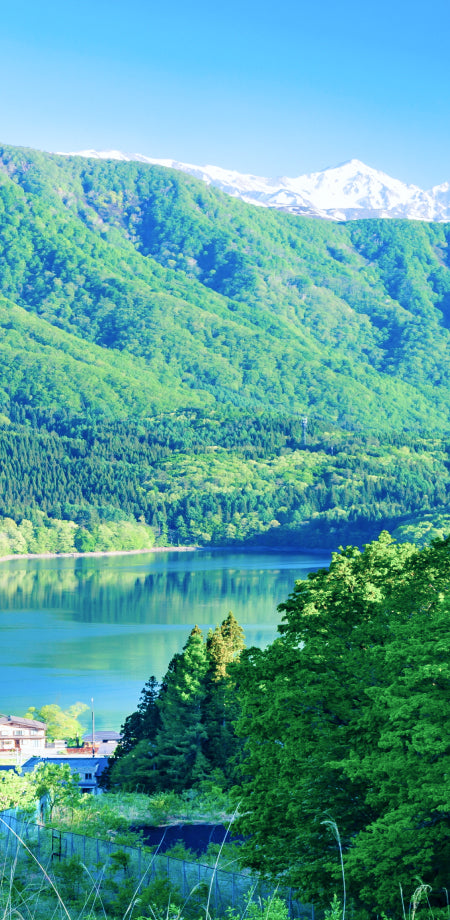投稿日:
更新日:
New soba season has arrived! I'm proud of you, I haven't eaten itShinshuSoba noodles
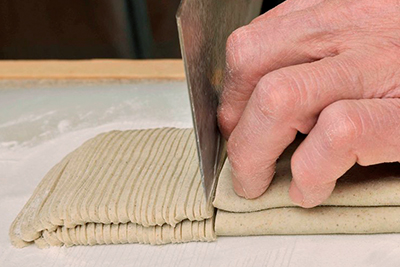
“ Nagano The most popular choice of food you want to eat when you go to the prefecture.ShinshuSoba noodles. According to a survey, more than 40% of people asked, "What prefectures are the best soba noodles?" Nagano "The prefecture." That's because it has been cultivated since ancient times as a grain in high-cold regions, and has the largest number of soba restaurants per person in Japan. It is said to be the birthplace of soba noodles.
Actually, that's not the caseShinshuThere are many different varieties, production methods, serving methods, and eating methods, and so on, so there are many different types of soba noodles. Rare and deep, you'd rarely encounter in TokyoShinshuWe'll introduce you to soba noodles.
*Please, don't eat: A message to mean "Come, eat."
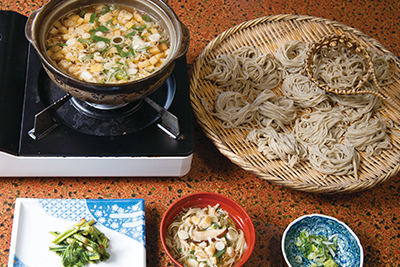
A special soba noodles made from a generous amount of local ingredients that warm your body and soul
Surrounded by mountains over 2,000m and five mountain passes, Hida andShinshuMatsumoto City's Nagawa district is located along the valley of Kanagawa, originating from Nomugi Pass, which connects the area. "Touji Soba" is a large pot of seasonal vegetables, wild vegetables, mushrooms, and duck meat that are boiled in a large pot of soy sauce-style soup with a sweet aroma, and then quickly heated the salmon from the bamboo basket.ShinshuIt is one of the most famous soba noodles.
"Toji" means soaking and warming, and it started when they put cold soba noodles in miso soup to eat warm and delicious food. When you lightly dip freshly made soba noodles into the soup, the aroma of the soba noodles is surprisingly even more prominent. Soba noodles, which were born from the wisdom of everyday life, have become a dish that can be served at weddings and other celebrations, and have spread to the surrounding area.
そして奈川は、上質な蕎麦の産地でもあります。 Two varieties are cultivated, "Kitawase" and "Nagawa native" are among the varieties, and "Nagawa native" is, as the name suggests, soba noodles native to the Kanagawa area. Cultivation was stopped once due to the damage caused by typhoon in 1998, but over 20 years it was revived with the efforts of local people, with the efforts of the locals. "Their powerful flavors are very different from other soba noodles," says Okuhara Nariaki, vice president of the Matsumoto City Nagawa Tourism Association. Although production volumes are increasing year by year, this rare soba noodles can still be eaten almost exclusively within the area. And it's hard to find "Toji Soba" in Matsumoto city. Why not experience the authentic taste of Kanagawa, a sacred place for soba noodles that only a few people know about?

Three soba restaurants in the area offer "Touji Soba", and the photos are from "Ryoto Senra" where you can enjoy meals. This popular restaurant has a long queue for 1-2 hours on weekends, and after eating soba noodles, we also recommend the rice porridge with rice and eggs. The soba noodles are nihachi soba noodles from Kitawase, a highly sweet, and advance reservations are required for "Nagawa Native" products.
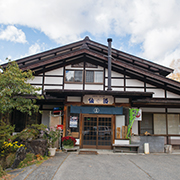
[Senraku]
Nagano 1044-124, Kanagawa, Matsumoto City, Prefecture TEL: 0263-79-2277
[Matsumoto City Nagawa Tourism Association]
TEL 0263-79-2125
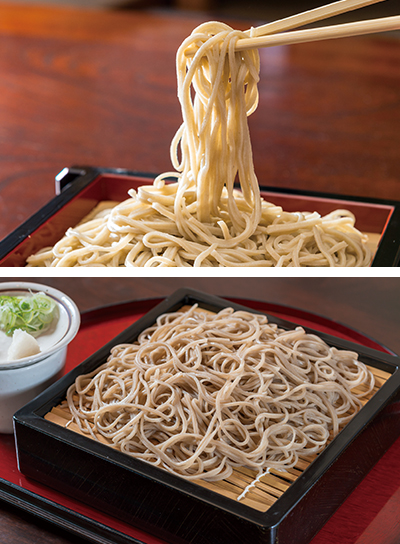
The legendary exquisite soba noodles from the western foot of Mt. Yatsugatake, prepared in a frozen, clear stream
Chino City has a high rate of sunny weather and low humidity, and sometimes the temperature drops below 10 degrees Celsius in winter, and there are many special soba restaurants, and the area where soba is planted is the top in the prefecture. In this area, the "phantom soba noodles" is "Kanzarashi Soba", which has been passed down on the western foot of Mt. Yatsugatake since the Edo period. The carefully selected high-quality soba fruit is soaked in a clean stream flowing from Mt. Yatsugatake during the cold season with its shells inside, and then for about a week to 10 days. Then, it is exposed to the cold wind for a month to a half to remove the moisture little by little, and aged in a storehouse until summer, milling only the central layer of the soba fruit, and then shaved without using a tether. This rare and precious soba noodles are served only for about 10 days in July at a limited number of restaurants in Chino City, and are exquisite with their chewy texture and fluffy, elegant sweetness without any impurities. It required the highest level of skill at the time and was a valuable and finest dish that could be eaten in summer doyo, so it was presented to the Shogun family as "smoke and cold soba noodles."
Production stopped after the Meiji period, but volunteer farmers who were aiming to brand soba noodles from Chino City spent several years researching their manufacturing methods, relying on old documents that remained in the local area. The local community, government and universities have revived together, and the production method is now being conveyed by the Yatsugatake Soba Kiri no Kai, which consists of six soba restaurants.
The "Canshashi Soba" (Part 1/Katsuyama Soba Shop) is a must-reserved item only available in limited quantities on the Doyo period in July, and the 2018 new soba (Part 1/Choju Sarashina). "What's amazing about cold soba noodles is that they have a taste that is comparable to the new soba noodles. It's very valuable to be able to eat such soba noodles in the summer," said the members of the Yatsugatake Soba Kirime Club. There are other areas besides Chino City that serve cold soba noodles, but this is the only place that can be called "presentation" because it boasts a history of offerings.
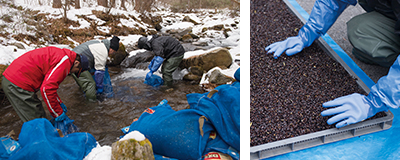
During the cold season, we head down the steep bank slopes of the mountains, and in a clear stream, we turn over a bag of soba fruit, checking the temperature and water temperature every day, and then turn over a bag containing soba fruit. Soba fruit is alive and can be preserved without deteriorating quality by exposing it to a clear stream and becoming supoisonous. While the soba fruit is dry, we always check it day and night to prevent cracking and keep an eye on it. Since 2016, they have begun cultivation by renting their own fields.
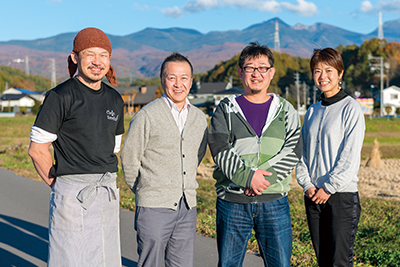
Everyone from the Yatsugatake Soba Cutting Association. From left: Nozawa Hideki, chairman Miyasaka Shinichi, Yano Seiji, and Tago Naomi from the Chino Tourist Urban Development Promotion Organization, which also promotes soba noodles in Chino City.
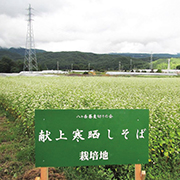
[Yatsugatake Soba Cooking Club]
Nagano 2332 Kanazawa, Chino City, Prefecture
[Katsuyama Soba Store]
TEL 0266-82-3556
There's more,ShinshuA unique and unique soba noodles
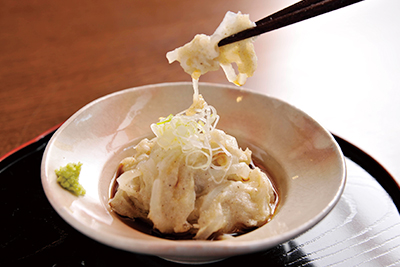
A local soba meal that is rare even in the country The Sukagawa district of Kitashiga Kogen, which is 700 to 1,000 meters above sea level, has a cool climate and good drainage, making it the perfect place for buckwheat cultivation. "Sukagawa soba" that uses yoyamabokuchi (mountain burdock) as a connection, and Nagano There are two speciality soba noodles, "Hasu Soba," designated as an intangible folk cultural property in the prefecture. "Hakusoba" is a rare local soba dish that is boiled shredded radish made from water-soluble kisoba flour, and then served with dashi stock. Nagano It is also known in the prefecture only in this area and in Akiyama-go, Sakae Village.
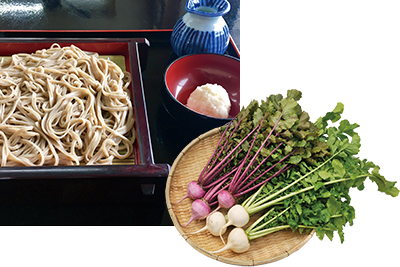
"Amakarapin" is addictive South overlooking the Central and Southern Alps and Ina ValleyShinshuShimojo Village. The morning mist that gushes from the Tenryu River foster a rich, flavorful soba noodles. An essential ingredient for this soba noodles is the condiment made from traditional vegetable spicy radish (Oyadarada Midaikon). The subtle sweetness unique to radish followed by the vivid spicy flavor, and locals described it as "amakarappin." You can enjoy the deliciousness of "Amakarapin" that will make you want to addictively with soba noodles.
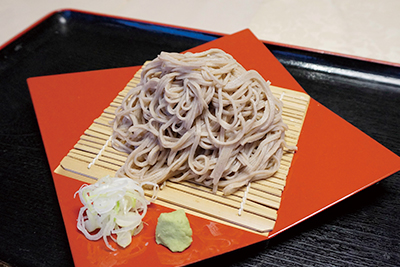
"Historical Soba" from Kita Shinano The relaxed flow of the Chikuma River and the original Japanese landscape spread outIiyama CityThe Tomikura area. The specialty here is "Tomikura Soba" which only removes fibers like algae grass from the leaves of Oyamabokuchi, also known as mountain burdock, and uses this as a link. The flavor, which was made over time and after being connected, brings out the original aroma of soba noodles, and is also known as the "phantom soba noodles" because of its unique throat feel and a "smooth" and "trained" texture.
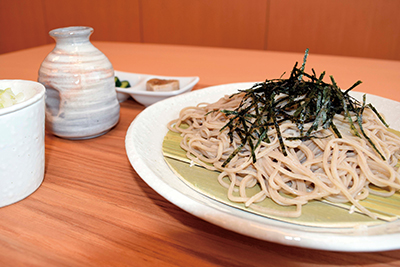
ShinshuThe origin of soba noodles is here The views of the two Alps are wonderful, and Minami is attracting attention as an ideal migration spot.ShinshuIijima Town. This town, including Shinano 1, Nagano Cultivated by the Prefectural Seed CenterShinshuIt is also the only cultivation area that is tasked with cultivating the seeds (original species) that are further the origin of the buckwheat seeds (seeds that are sown to obtain seeds). This "smoked soba" is "Iijima Gen Soba".ShinshuYou can enjoy the flavor that can be said to be the origin of soba noodles.
This article is information as of November 2018.
Please note that the products we carry may have changed.















